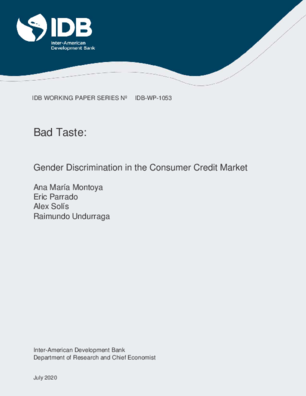Bad Taste: Gender Discrimination in the Consumer Credit Market
Date
Jul 2020
Summary
When evaluating observably similar loan applications from men and women, do loan officers favor men? This paper randomly assigned loan requests of variable amounts to a balanced sample of male and female prospective borrowers who then submitted the assigned loan requests to randomly assigned loan officers in Chile. It is found that loan requests submitted by women are 14.8 percent less likely to be approved compared to otherwise equivalent loan requests submitted by men, even though official statistics show that women in Chile have higher repayment rates than men. In a corollary experiment, the paper explores whether gender discrimination is due to inaccurate statistical discrimination among loan officers, for which a treatment is implemented aimed at “correcting” loan officers’ biased beliefs through the provision of actual information on the repayment performance of male and female borrowers. The treatment is found to be ineffective, suggesting taste-based discrimination. By eliciting gender preferences among loan officers, it is shown that male-female differences in approval rates are 30 to 32 percent larger among pro-male officers relative to not-pro-male peers, with most of the effect driven by male pro-male officers. Finally, a model-based test showing that gender discrimination decreases with the requested loan amount is also consistent with the taste-based hypothesis. It is estimated that 9.9 percent of expected bank profits are not capitalized due to taste-based discrimination (equivalent to annual foregone profits of US$ 13,400 per case), an inefficiency cost equal to the annual wage bill of 1,500 loan officers or 18 percent of all loan officers working in the Chilean banking system.




